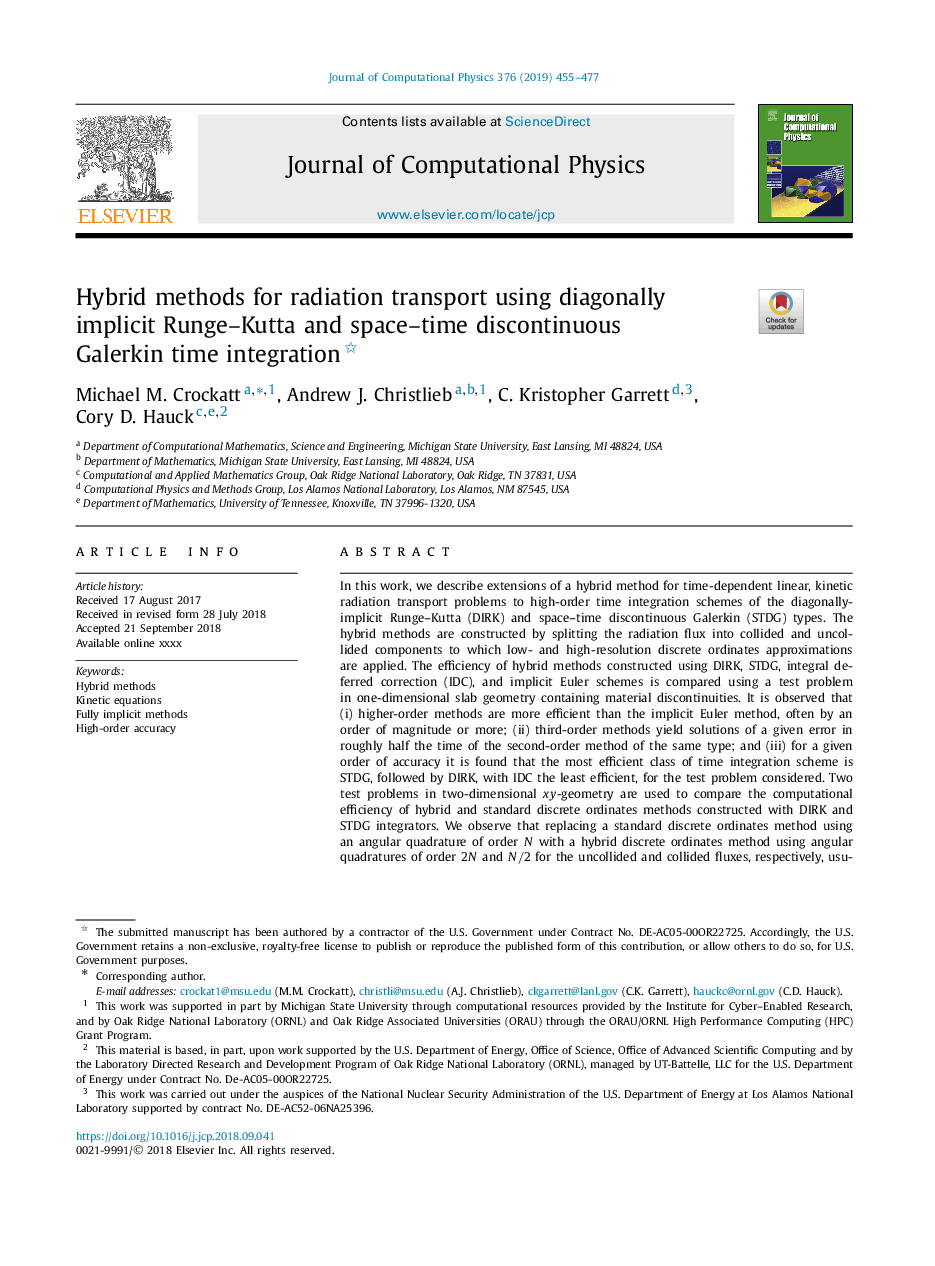| کد مقاله | کد نشریه | سال انتشار | مقاله انگلیسی | نسخه تمام متن |
|---|---|---|---|---|
| 11023899 | 1701236 | 2019 | 23 صفحه PDF | دانلود رایگان |
عنوان انگلیسی مقاله ISI
Hybrid methods for radiation transport using diagonally implicit Runge-Kutta and space-time discontinuous Galerkin time integration
دانلود مقاله + سفارش ترجمه
دانلود مقاله ISI انگلیسی
رایگان برای ایرانیان
کلمات کلیدی
موضوعات مرتبط
مهندسی و علوم پایه
مهندسی کامپیوتر
نرم افزارهای علوم کامپیوتر
پیش نمایش صفحه اول مقاله

چکیده انگلیسی
In this work, we describe extensions of a hybrid method for time-dependent linear, kinetic radiation transport problems to high-order time integration schemes of the diagonally-implicit Runge-Kutta (DIRK) and space-time discontinuous Galerkin (STDG) types. The hybrid methods are constructed by splitting the radiation flux into collided and uncollided components to which low- and high-resolution discrete ordinates approximations are applied. The efficiency of hybrid methods constructed using DIRK, STDG, integral deferred correction (IDC), and implicit Euler schemes is compared using a test problem in one-dimensional slab geometry containing material discontinuities. It is observed that (i) higher-order methods are more efficient than the implicit Euler method, often by an order of magnitude or more; (ii) third-order methods yield solutions of a given error in roughly half the time of the second-order method of the same type; and (iii) for a given order of accuracy it is found that the most efficient class of time integration scheme is STDG, followed by DIRK, with IDC the least efficient, for the test problem considered. Two test problems in two-dimensional xy-geometry are used to compare the computational efficiency of hybrid and standard discrete ordinates methods constructed with DIRK and STDG integrators. We observe that replacing a standard discrete ordinates method using an angular quadrature of order N with a hybrid discrete ordinates method using angular quadratures of order 2N and N/2 for the uncollided and collided fluxes, respectively, usually reduces overall solution time by a factor of 2 or more while simultaneously reducing the resulting solution error by a factor of 2 or more for the test problems considered.
ناشر
Database: Elsevier - ScienceDirect (ساینس دایرکت)
Journal: Journal of Computational Physics - Volume 376, 1 January 2019, Pages 455-477
Journal: Journal of Computational Physics - Volume 376, 1 January 2019, Pages 455-477
نویسندگان
Michael M. Crockatt, Andrew J. Christlieb, C. Kristopher Garrett, Cory D. Hauck,